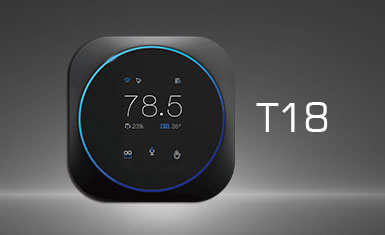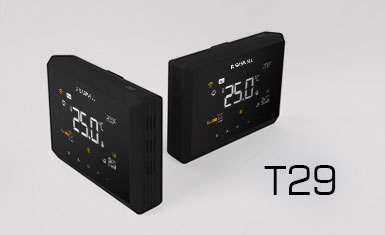Ease of installation A thermostat shouldn’t be difficult to install, even if you’re only moderately handy. The manufacturer should provide comprehensive, yet easy-to-understand instructions with plenty of photographs or illustrations to guide you through the process. The thermostat itself should be clearly indicate which wires go where, and most companies provide labels that you can attach to the wires coming out of the wall as you disconnect and remove your old model. The wires themselves should be color coded, but a good practice is to photograph your old thermostat for reference before you take it down.
Geofencing This feature uses the thermostat’s app and your smartphone’s GPS chip to establish a perimeter around your home. When you leave the perimeter, you presumably no longer need to heat and cool your home, or you can at least have the thermostat adjust the temperature so that it’s not running unnecessarily. When you cross the perimeter again as you come home, your HVAC system can kick into action so your house is comfortable when you walk in the door.
High-voltage heater support Most smart thermostats are designed to work with central HVAC systems. If your home is heated by high-voltage heaters (baseboard, radiant, and fan-forced convector, for example), you’ll need a thermostat that’s specifically designed to work with that type of heater.
Remote Access Remote access enables you to control your thermostat from afar, so that you can check in and adjust the temperature from wherever you have a connection to the internet.
Sensors Geofencing is great—provided everyone who lives in the home has a smartphone. Motion and proximity sensors offer an alternative means of determining if your home is occupied and therefor in need of climate control. The original Nest thermostat was often criticized for relying too much on its motion sensor. If no one walked past it often enough, it would decide that the house was empty and it would stop heating or cooling. Some smart thermostats can also tap into door and window sensors as well as the motion sensors for your home security system. And proximity sensors on the thermostat itself can trigger a thermostat’s display to turn on when you walk past it, making the screens a handy feature in their own right, even if for no other reason than providing a nighttime pathway light.
mart-home system integration Every smart thermostat comes with an app so you can control it with your smartphone or tablet, but the best models can also be integrated with other smart-home devices and broader smart-home systems. This can range from being able to adjust the temperature with a voice command via an Amazon Echo or Google Home digital assistant, to linking to your smoke detector so that your fan automatically turns off when fire is detected, preventing smoke from being circulated throughout your home. Other options to consider include IFTTT and Stringify support, Apple HomeKit compatibility, smart-vent connectivity, and tie-ins with home security systems.
System complexity Each of the thermostats we tested support multi-stage heating, ventilation, and air conditioning (HVAC) systems, as well as heat pump systems. If your home is divided into zones that are heated and cooled independently of each other, you’ll probably need one thermostat for each zone. A single app should be able to control multiple zones.
User interface Long gone are the days when a thermostat’s user interface consisted of numbers on a dial. The more sophisticated a device becomes,the more difficult it can be to learn to use. The last thing you want to be doing is staring at inscrutable hieroglyphics on the wall when all you really want is to be warmer or cooler. A smart thermostat should convey important information at a glance and should easily adapt to your specific needs.


 info@saswell.com
info@saswell.com English
English  français
français Deutsch
Deutsch русский
русский español
español العربية
العربية 简体中文
简体中文




 online service
online service 8675528906113
8675528906113